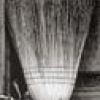
Posted
Usually I'm creating pure orchestral stuff, but the other day I was in the mood for doing something a bit different. I wanted to try out, what could be done with the other sounds I have in my setup.
Actually I'm not very well equipped with other than orchestral sounds, so please don't expect sound wonders. I ended up with a mix of orchestral and some guitar and choir sounds. It's mainly the standard sound set of Halion Sonic SE. Only the string ensemble is from Halion orchestra and the cello sound at the second part of the piece is from EWQL Hollywood Strings.
[color=red][size=16]Bittersweet Tears[/size][/color]
(https://w.soundcloud.com/player/?url=https%3A//api.soundcloud.com/track…)
At this piece I've used a workflow, which I call "Song Morphing". One can say that it's the opposite of the workflow "Building up from scratch". "Song Morphing" means that I use the MIDI file of an existing song and transform it until something completely new is created. Synfire is a perfect tool for that.
"Song Morphing" has significant advantages over "Building up from scratch". Above all, you don't need to have an ingenious inspiration to start your work. You don't need to worry about building up musical substance, little by little, track by track, without knowing whether something good will come out at the end. At "Song Morphing" the musical substance is there from the beginning. You only have to watch out that the substance is not lost anywhere on the way.
Another advantage of this workflow is that you don't need to to play a keyboard or any other instrument. At the creation of this piece I didn't even touch a keyboard. If you feel that you need some additional phrases for your piece then you certainly can play them on a keyboard. But I usually browse my Synfire libraries. Or I use one of my phrase generating or MIDI processing tools. That's what I did here to create the string phrase at the first part of the piece (made with a tool called Catanya) and the fast plucked guitar phrase (the "tears") at the second part (made by chopping up the guitar phrase from the first part with a tool called Style Enhancer). These phrases then were imported into Synfire and further processed there. The "tears phrase" at the second part for example has got a vector at the transpose parameter what accounts for these interesting sounding pitch movements and jumps.
To transform the music I load small portions of it as an accompaniment and try out chord progressions, modify phrases with the operations of the transform menu, try out different settings at the interpretation parameter, see what comes out when I use the variation or the morphing parameter, make editings at the phrase editor, and so on. Simply everything what comes into mind. After all these operations I usually end up with a couple of ideas, each of them stored in a separate Synfire file. Then I select those, which I like most and link them together, either at a new Synfire project file or at the DAW. In this project I finally had two parts, which I linked in Cubase. I attached these two Synfire files to this post (the instruments are assigned to GM sounds there). There is also another file attached, which was used as a bridge between these two parts. There I applied the figure morphing feature of Synfire at a guitar phrase.
One might argue that this way of working is not real composing. But for me, it's only the resulting music that matters. I also don't see problems with the copyrights of the the original pieces I use. After some transformations, it is quite impossible to recognize the original piece yet.
The original song that I used in this project is this one: . I've also attached the demo snippet of the original MIDI file (the complete MIDI file is not free so I can't post it). What would you say? One might have recognize it?
So., 19.08.2012 - 11:46 Permalink
Actually I'm not very well equipped with other than orchestral sounds, so please don't expect sound wonders. I ended up with a mix of orchestral and some guitar and choir sounds. It's mainly the standard sound set of Halion Sonic SE.
For me this is composing too..interesting arrangment.
You are using also Halion Sonic Se and i like to see more support for that in SFP , by using their keyswitched sounds like i see it be done in Cubase..perhaps SFP can use this workflow too?
Than there is more control about the articulated sounds and dynamics too
Ariculations lanes can be used than for all articultions.
So., 19.08.2012 - 17:04 Permalink
Thanks Juergen for sharing your workflow insights with us. Well done piece. I would not have recognized it. The original is a rather generic progression and arrangement. You really made something different off it.
Mo., 20.08.2012 - 21:35 Permalink
Juergen, thanks!
Great transformation and the "Song Morphing" workflow can work even for me. At least in a simplified version. Years ago I collected a lot of midi files that I have never used or even listened to but now I am lucky to have them.
Mo., 20.08.2012 - 23:14 Permalink
Great transformation and the "Song Morphing" workflow can work even for me.
Yes, when reading your message from two day ago I've seen that you pursue a similar approach. This workflow works with every genre, by the way. I use it also at my orchestral works. I hope the old masters like Mozart, Bruckner, Strauss, Tchaikovski will forgive me. I put them all through this meat grinder, called Synfire. And I don't hesitate to mix them with phrases from other genres. ;)
Mi., 22.08.2012 - 08:51 Permalink
I hope the old masters like Mozart, Bruckner, Strauss, Tchaikovski will
forgive me. I put them all through this meat grinder, called Synfire.
They will for sure, because they did so too. There were no computers at that time, so they had to it manually. Every new art is based on fragments and inspirations taken from multiple sources. That's how the evolution of culture works.
Mi., 22.08.2012 - 18:38 Permalink
Hi juergen
this is nice work
i love the mood especially of first part ( till 2:45)
in this example there is no way to recognize what was the original song
also i agree... creating a new song by morphing existing ones its really good way to start
and
also to me its actually "almost" same thing
with creating a song by using Accompaniments.
just for example
i think you'll recognize the first part :)
(https://w.soundcloud.com/player/?url=https%3A//api.soundcloud.com/track…)
Mi., 22.08.2012 - 19:55 Permalink
just for example
i think you'll recognize the first part
Hi soundcase,
Haha, yes, nice work! :listen: And this is also a good demonstration that a song can be morphed in many different ways. The possibilities are endless.
Fr., 24.08.2012 - 20:25 Permalink
Juergen,
Thanks for sharing the wonderful "song morphing" idea. What I did with the bulgarian singer was somewhat similar but much simpler and great as a test project. After listening to the examples uploaded so far I decided to try "song morphing" too :)
So now I have brutally butchered a very nice song and filled it with a crazy chord progression that probably violates every possible harmonic rule and leads nowhere. Ha ha! This is so much fun :) And I actually believe that I am learning something too!
I kept the structure of the original song and two instrument tracks. But I radically changed the chords and used Pulse Controller to record a basis for a new lead melody which Synfire adapted quite well to the new progression although I made a few changes afterwords. It is fun to use Pulse Controller as it lets me focus on the "rythm" of the playing. One can of course also do this with a keyboard but "tapping" is fun and it works quite well.
As usual I exported a MIDI file and finished the "thing" in Logic.
Can you guess the original song?
(https://w.soundcloud.com/player/?url=https%3A//api.soundcloud.com/track…)
PS. One day I will try to make something that has some kind of musical structure and meaning. But first I will play some more :)
Fr., 24.08.2012 - 20:51 Permalink
Cool. The rhythm is flowing nicely. That pulse thingy seems to be extremely helpful.
Fr., 24.08.2012 - 21:05 Permalink
Sounds good : the art of musical composing is to tell someone a story: emotional
Good exercises for try in the future to master musical structure
Basic is Repeating - Variation
Too much variation makes it that you loose the attention of the listener ..it is a balance between repeating and variation
What do you think of the "minimalism" as composing form (as example)
- "quoting":
- Minimalism, as a musical art movement began in the early 1960s and was brought to prominence btyTerry Riley with the enormously influential piece entitled "In C". It has been growing steadly ever since and composers such as Philip Glass , Steve Reich, John Adams and Michqel Nieman are all very successful in this genre, writing music for film and theater as well as concerts works. Indeed the music of Glass and Reich is now so freqeuntly imitated that the style can be heard on all manner of television commercials and incidental music.
- The cyclic and repetitive techniques used in minimalism often produce music of a static nature ideally suited for use with the moving image in the form of atmospheric soundtracks. These same techniques also make it ideal music for composing within sequenzers, such as Cubase. However, because the music is essentially repetitive, many people mistakenly believe that all they have to do is compose in a few measures and apply the repeat function. This inevitably leads to very boring music indeed. To make it interesting, just as in all other forms of music , repetition must be combined with variation.
- There are many techniques used in minimalism , and the repetitive nature of the music often belies its complexity
The author makes 2 arrangments for this
The book : Get creative with Cubase SX/SL shows these arrangments
Fr., 24.08.2012 - 21:13 Permalink
Hi Per,
I see you've already understood the principle. :yeah: Nice track! No, I can't guess the original song. Reminds me to something, but I can't say what it is. But it's cool.
I think we could organize a new kind of a contest: "Do you recognize my morphed song?" :-D
Fr., 24.08.2012 - 23:31 Permalink
Thanks everyone for listening, encouragements and comments :)
That pulse thingy seems to be extremely helpful.
Yes, it is fun to use and quite useful with Synfire. I'm sure I can use it in many upcoming projects.
Basic is Repeating - Variation
Too much variation makes it that you loose the attention of the listener
Yes, I totally agree, but right now I am like a little child who has been given a huge set of colorful crayons and who insists on using all of them on every picture :) I know that my morphed song is totally confusing as it lacks a basic structure but I quite enjoy learning by making mistakes while trying to remember: "Less is more" and "Kill your darlings" :)
What do you think of the "minimalism" as composing form
Thanks for bringing that up. "Minimalism" is a "style" that I would really like to understand. I have previously listened to and enjoyed music by people like Philip Glass , Steve Reich and also some less known composers like Howard Skempton. So trying something like that is definitely high up on my "to-do" list.
No, I can't guess the original song.
Well, the song is based on Beatle's Hey Jude! And the piano and the guitar tracks are changed very little, but I did test many different setting for the figure recognition and this had a big effect on the score. I intend to revisit the song in a few weeks and possibly make a new version.
I think we could organize a new kind of a contest: "Do you recognize my morphed song?"
It seems that it has already started :) Maybe it could be an ongoing "contest" until somebody donates a prize!
So., 16.09.2012 - 22:20 Permalink
Sorry for bumping this old thread again. Just want to tell that I rearranged the piece from the first post of this thread for a classical chamber music ensemble (flute, string quartet and harpsichord):
The sounds are by the Vienna Symphonic Library
Mi., 12.06.2013 - 03:30 Permalink
Never in a million years would I have recognized this! Extremely interesting and good work. Iplayed bass for a living in the Beatles era! Now I will have to play with some Beatles midis!
Do., 13.06.2013 - 14:16 Permalink
Very cool piece! Morphing is something I really need to wrap my brain around. Thank you for shareing you music and also for sharing your workflow!





